Introduction
Misconceptions about autism and romantic relationships often overshadow the reality that individuals on the spectrum are fully capable of deep love and meaningful connections. Challenging these stereotypes is essential for fostering a more inclusive perspective on relationships involving autistic individuals. Understanding neurodiversity, which highlights the diverse ways people experience the world, is crucial in dismantling myths and promoting empathy, patience, and effective communication.
This article explores the unique challenges faced by autistic individuals in the dating world, the importance of clear and direct communication, and the role of acceptance and empathy in fostering fulfilling relationships. By recognizing and accommodating the unique needs and preferences of autistic partners, relationships can thrive in a supportive and nurturing environment.
Debunking Common Misconceptions About Autism and Love
Misunderstandings regarding autism and its effect on romantic bonds continue, often eclipsing the truth that people on the spectrum are entirely able to experience profound affection and significant connections. Challenging these stereotypes is essential, as it aids in promoting a more inclusive viewpoint on connections involving individuals on the autism spectrum. Neurodiversity, which refers to the diverse ways in which people experience the world, challenges the perception that these differences are deficits. As ERC grantee Kristien Hens noted, “…neurodiversity refers to the diverse ways in which people experience the world around them and challenges the perception of these differences as deficits.” Recognizing that love can manifest in various forms and expressions helps dismantle the myths and stereotypes surrounding autism. This awareness is crucial for fostering empathy, patience, and effective communication in supportive connections with autistic individuals.
The Unique Challenges of Dating on the Autism Spectrum
Navigating the dating world while on the autism spectrum presents unique challenges, primarily in social communication and sensory sensitivities. Patience and understanding from both partners are crucial, as they engage in open dialogues about their needs and boundaries. Creating a supportive connection involves recognizing these challenges and collaborating to overcome them.
The curriculum from Empowering Healthy Relationships for People with Disabilities emphasizes the importance of fostering self-esteem, confidence, and problem-solving in the context of dating. This comprehensive resource includes 16 video lessons, worksheets, and discussion guides tailored to assist people with disabilities in developing healthy relationship skills.
Dating platforms such as Dating4Disabled and Meet Disabled Singles establish inclusive environments for people with disabilities to connect. These platforms provide a sense of community by enabling users to share their stories and connect with like-minded people. 'According to a recent study, the online dating market is projected to reach $8.4 billion by 2025, with a significant segment dedicated to serving people with disabilities.'.
Dr. David Offord, a child psychiatrist, emphasized the importance of a supportive environment for the well-being of children with disabilities. This principle applies to adults, as a supportive and understanding connection can significantly enhance the quality of life for people on the autism spectrum.
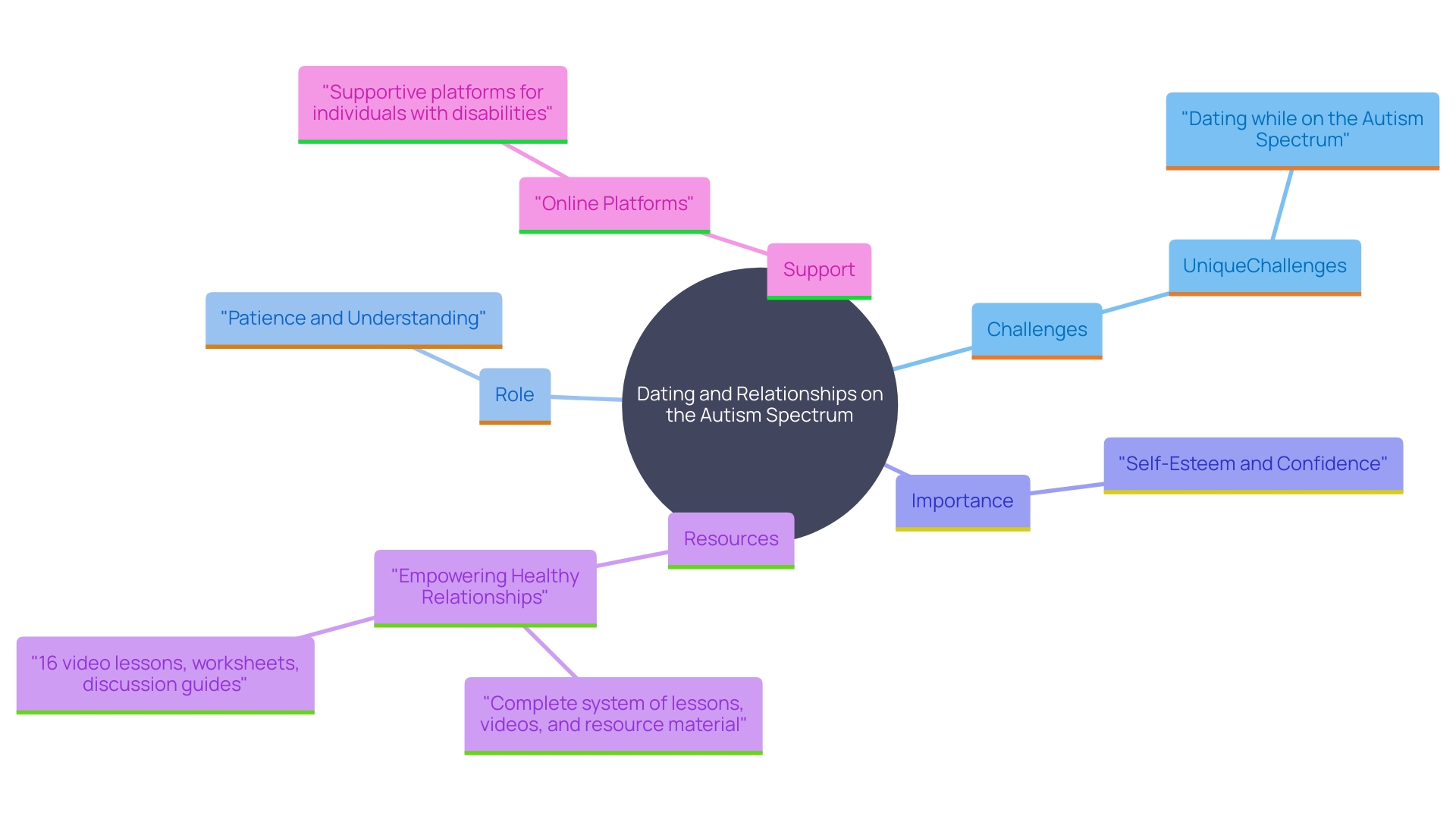
Understanding and Supporting Autistic Individuals in Romantic Relationships
Assistance plays a crucial part in fostering connections involving people on the autism spectrum. Recognizing their unique needs and preferences, whether that means accommodating sensory sensitivities or understanding their communication style, is crucial. Many individuals on the autism spectrum thrive on clear, direct communication. Ambiguity can lead to increased confusion and misinterpretation. Thus, partners should communicate in a straightforward manner, avoiding idioms and vague language.
Active listening and validating experiences are key in creating a strong bond. Real-world examples show how adapting the environment to meet these needs can foster trust and respect. For instance, in understanding the sensory experiences of children on the spectrum, researchers found it essential to create descriptive and analytical themes from their perspectives, which helped in better accommodating their needs.
Furthermore, societal expectations concerning communication styles can adversely affect autistic people, particularly in workplace environments. Adopting strategies that cater to their communication preferences, such as using lists and step-by-step guides, can significantly enhance mutual understanding.
By adopting these methods, collaborators can create a nurturing atmosphere where both parties can flourish. This aligns with the broader goal of reducing disparities in access to services and creating more inclusive communities, as highlighted by the Interagency Autism Coordinating Committee's recommendations.
The Importance of Communication and Self-Awareness in Autistic Relationships
Effective communication is essential in connections, especially when one individual is on the autism spectrum. Understanding and respecting boundaries and expectations early on can create a healthier dynamic. Encouraging self-awareness and open discussions about feelings, preferences, and challenges is crucial. As autism advocate Kieran Rose emphasized, there is a considerable gap in resources focusing on the unique experiences of autistic people in relationships, especially concerning intimate relationship violence. Establishing a nurturing atmosphere where both individuals feel acknowledged and appreciated can boost closeness and comprehension. Neurodivergent people often experience emotions intensely, with diverse preferences regarding physical touch and other aspects of intimacy. By recognizing these differences and fostering open communication, individuals can develop a deeper connection and mutual support.
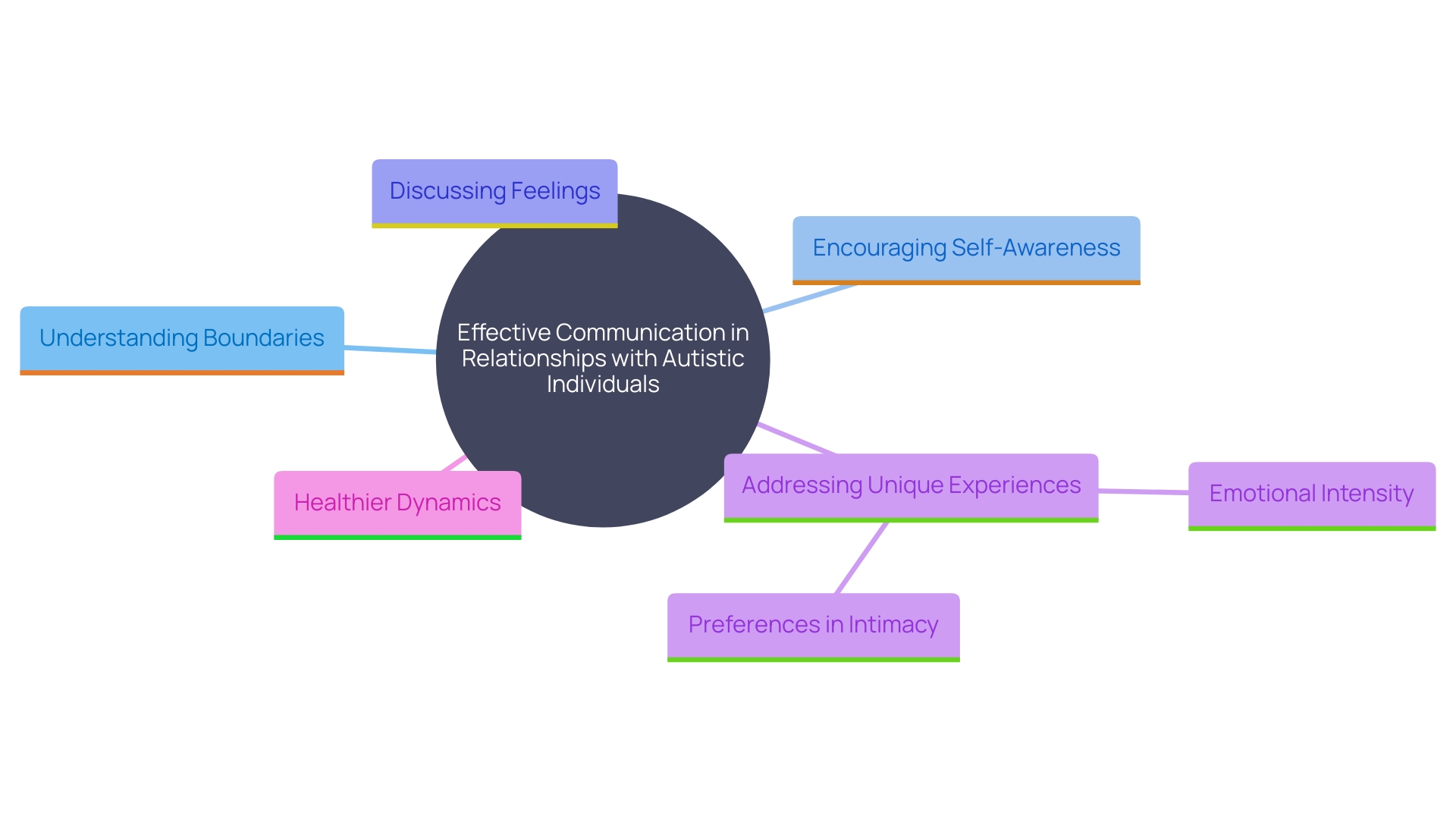
Building Meaningful Connections Through Shared Interests and Routine
Common interests and routines can be a foundation in connections with autistic individuals. Engaging in mutual activities not only strengthens the bond but also enhances comfort in social settings. For instance, Maria’s journey in the workplace highlights how participating in team activities and advocating for herself helped her feel more integrated and confident. Likewise, creating predictable routines fosters a sense of security, enabling both individuals to thrive. As per studies released in the journal Personal Relationships, maintaining connections requires both individuals contributing to positivity, openness, assurances, social networks, and shared tasks. This collaborative approach ensures that each participant recognizes and values the other's efforts, fostering a nurturing and supportive environment.
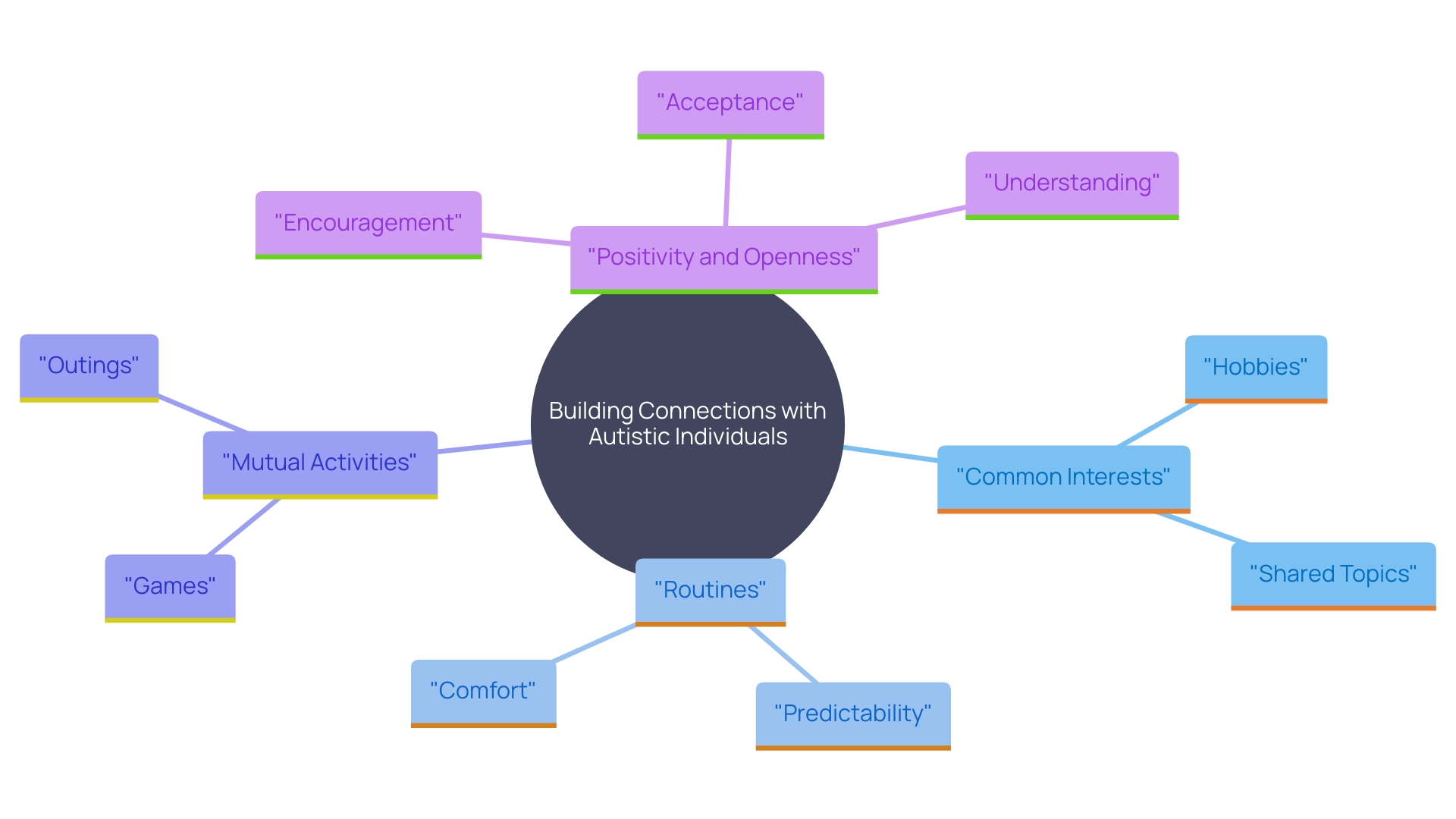
The Role of Acceptance and Empathy in Fostering Fulfilling Autistic Relationships
Acceptance and empathy are the cornerstones of any loving relationship. Embracing neurodiversity and valuing each individual's unique qualities fosters an environment of mutual respect. For many autistic people, routine and structure are essential, as pointed out by Dr. Sultan, who emphasizes that unexpected changes can be difficult. Establishing clear boundaries and guidelines upfront, such as preferred communication styles and comfort levels in social settings, can significantly reduce uncertainty. This approach enhances emotional support and understanding, allowing couples to navigate challenges together. By recognizing and accommodating these needs, collaborators can create a supportive atmosphere where both individuals thrive.
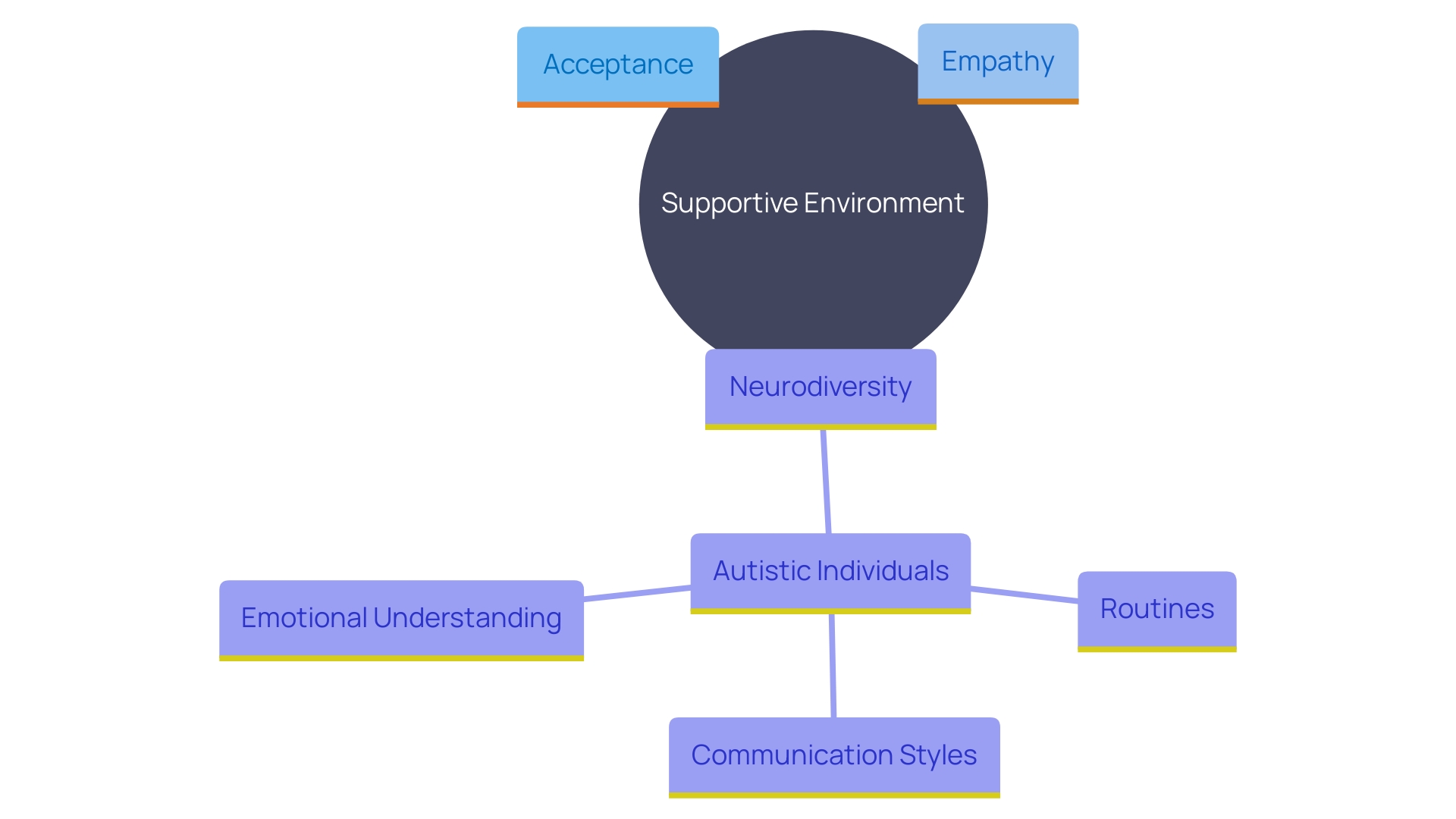
Practical Tips for Navigating Autism Dating: Setting Realistic Expectations and Boundaries
Establishing realistic expectations and boundaries is essential for nurturing relationships involving autism. By openly sharing needs and limitations, both partners can create a foundation of mutual understanding and respect. This transparency helps to minimize misunderstandings and fosters a safe environment where every person feels valued and supported. As Dr. Sultan observes, many autistic individuals flourish with routine and structure, which can occasionally conflict with the unpredictability of dating and connections. Setting expectations upfront, such as preferred communication styles and comfort levels in various social settings, can significantly reduce uncertainty. For instance, opting for quieter, more intimate settings for dates can create a comfortable space for meaningful conversations. Resources such as the Empowering Healthy Relationships for People with Disabilities curriculum offer valuable tools and guidance for couples, highlighting the significance of self-esteem, decision-making, and problem-solving in partnerships. By recognizing and accommodating each other's unique needs, partners can build a stronger and more supportive connection.
Creating a Supportive Environment for Autistic Individuals in Love
Establishing a nurturing atmosphere is essential for the welfare of people on the spectrum in romantic connections. This involves being attentive to sensory triggers and providing safe spaces for relaxation and effective communication. Many autistic people flourish with routine and structure, which can be difficult in the often unpredictable nature of connections. Dr. Sultan notes, “Establishing expectations up front can help reduce uncertainty.” This might involve discussing preferred communication styles and comfort levels in social settings. For instance, choosing quiet, intimate locations for dates where meaningful conversations can take place can be beneficial.
Moreover, promoting autonomy while being accessible for assistance helps sustain a balanced connection. Setting clear boundaries and guidelines from the beginning can foster a healthier connection. Given that neurodivergent people can experience emotions intensely, establishing certain expectations early on can prevent feelings of being undesired or unwanted. Understanding that everyone has different preferences—some may enjoy physical touch while others may not—allows for a more personalized and supportive approach. This nurturing environment not only respects the unique needs of autistic individuals but also strengthens the relationship.
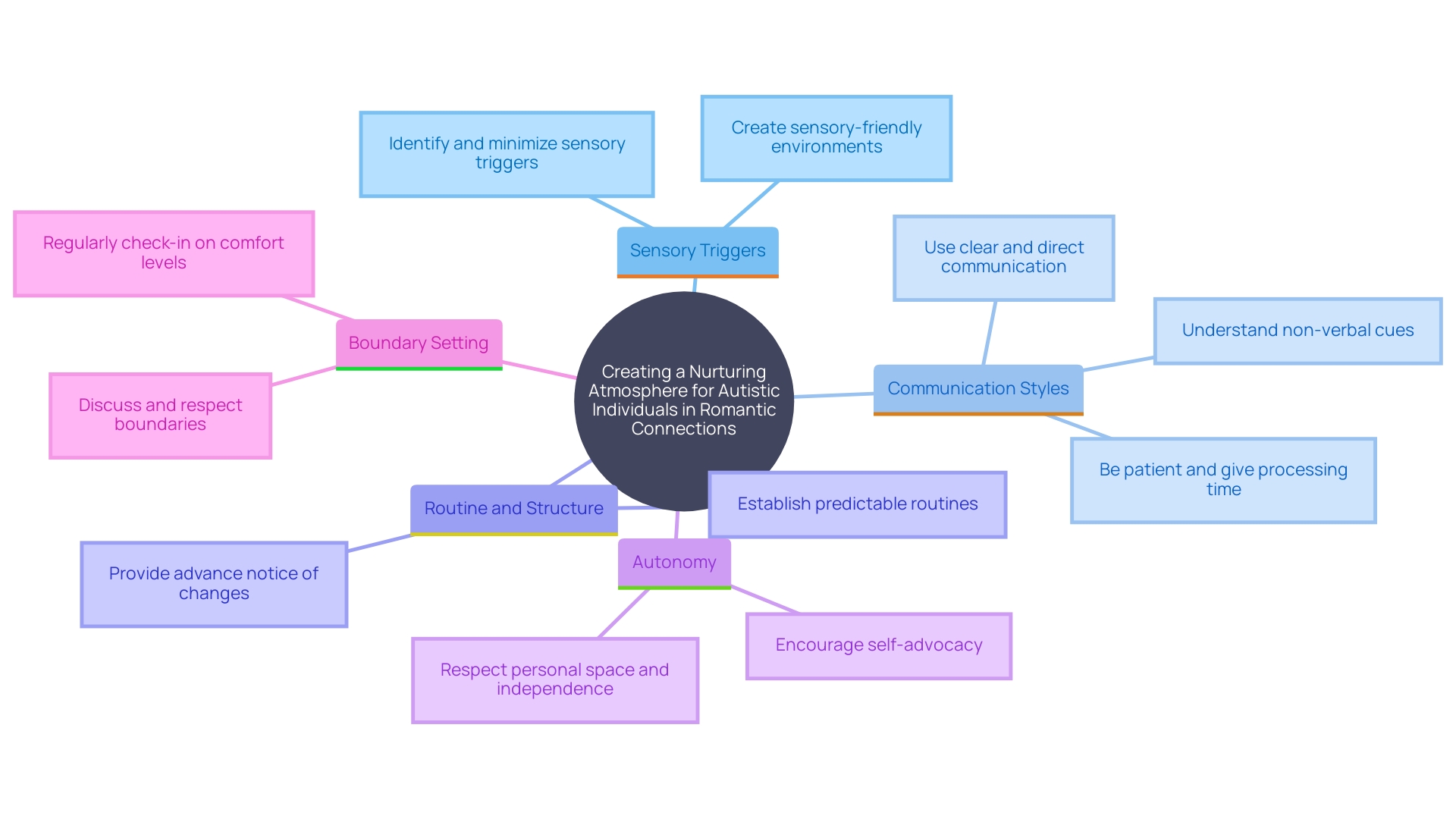
Conclusion
Misconceptions about autism and romantic relationships continue to hinder the recognition of the profound love and meaningful connections that individuals on the spectrum can experience. By challenging these stereotypes, society can foster a more inclusive perspective, emphasizing the importance of neurodiversity and the unique ways individuals engage with the world. Understanding and accepting these differences is vital for promoting empathy, patience, and effective communication in relationships involving autistic partners.
Navigating the dating landscape presents distinct challenges for autistic individuals, particularly in areas of social communication and sensory sensitivities. Building a supportive relationship requires open dialogues and a commitment to understanding each partner's needs and boundaries. Resources such as the Empowering Healthy Relationships curriculum provide essential tools for developing healthy relationship skills, while inclusive dating platforms create spaces for connection and community.
Recognizing the importance of a supportive environment can significantly enhance the quality of life for individuals on the autism spectrum.
Effective communication is paramount in fostering fulfilling relationships. Encouraging self-awareness and open discussions about personal preferences and challenges can strengthen the bond between partners. By embracing clear, direct communication and validating each other’s experiences, couples can create a deeper connection.
Additionally, shared interests and routines can serve as a foundation for meaningful connections, reinforcing comfort and security within the relationship.
Ultimately, acceptance and empathy are crucial in nurturing loving relationships involving autistic individuals. Establishing clear expectations and boundaries allows couples to navigate challenges together, fostering a supportive atmosphere where both partners can thrive. By recognizing and accommodating each other's unique needs, relationships can flourish, creating a lasting bond built on mutual respect and understanding.




